A bala de prata para o marketing de startups

ETodos os dias, vejo empreendedores e profissionais de marketing de startups procurando desesperadamente por um truque de mágica.
Algum tipo de tática secreta ou hack que fará com que o dinheiro caia sobre eles em pouco tempo. Como os códigos de trapaça do seu videogame favorito.

Você sabe, como todas as outras startups ao seu redor.
One little trick and BOOM 💥 — explosive growth as far as the human eye can see.
Why can’t we have that? 🙄
Growth hacks they call them. The internet’s version of black magic.
Chances are you’ve been on a quest to find the secret for a while now 😯.
Chances are you’re looking for such a secret at this very moment 😏.
Chances are you’ve already given up on ever finding the secret 😒.
Chances are you stopped believing the secret existed in the first place 🤔.
Chances are you’re reading this post because the title hints at the secret 😛.
 Estou trollando você? 🤡
Estou trollando você? 🤡
No. I’m a man of my word. I will show you the secret.
Porque sim, o segredo existe .
But it’s not guarded by one of those growth hacking agencies that keeps on telling you that they’ll launch your startup into the stratosphere 🚀.
If only you would give them a shot.
👉 In exchange for about half your funding 💸 .
They’re not guarding anything. They just want you to believe that you know nothing and they know everything so you’ll give them their money.
Na terra dos cegos, quem tem um olho é rei, lembra? Isso é chamado de marketing.

Don’t get me wrong.
Growth hacking is fun. It’s a great way to cut corners and get ahead of the competition 🏎️. You’ll win some ground and maybe, just maybe it’ll even get you some initial traction.
Mas isso só o levará até onde sua adequação produto-mercado permitir.
True product-market fit is the one and only way to scale and growth hacking doesn’t hold the secret to getting you that.
O segredo está em você 🗝️.
As a startup, you’re in the business of solving real-world problems.
You have a unique take on your topic’s problems. You have a unique set of tactics, strategies and approaches to solve those problems.
You have unique value to give ✨. Product — and content-wise.
Em algum lugar, há um grupo de pessoas com o conjunto exato de problemas que você está apto a resolver. Um grupo de pessoas que precisa de seu valor. Seu público.
👉 You just need to find that group of people — or have ‘m find you — and give ‘m what they need.
That’s it. That’s your secret 🗝️.
🎈 Giving out your value to the people it’s of value to.
Here’s the thing startups don’t seem to get 👇.
People won’t buy your product because you’ve been working your ass off for four straight years, living off a waiter’s salary, sleeping on a stinking mattress in your friend’s garage.
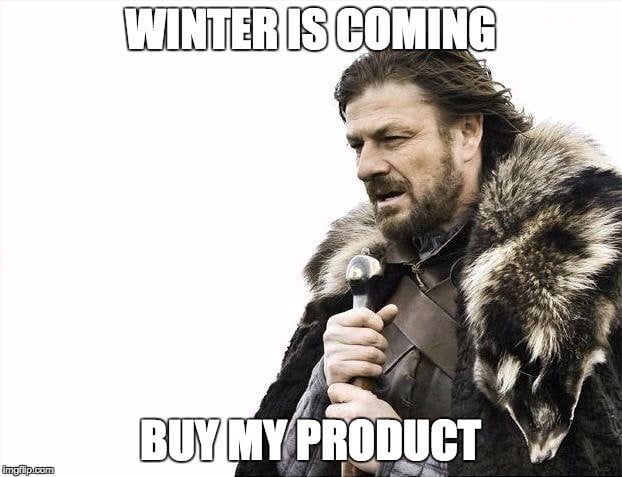
As pessoas comprarão seu produto porque isso melhora a vida deles.
Você está se perguntando por que ninguém está lendo as postagens do seu blog?
Por que somente sua mãe curte suas atualizações no Facebook?
Why you’re getting so much hate on your cold emails?
Why your website traffic isn’t going up?
Por que nenhum dos seus usuários de avaliação começa a pagar?
Here’s why 👉 Ninguém se importa.
Colocar seu sangue, suor e lágrimas em seu produto não faz com que eles lhe devam nada. Isso vale para a vida em geral, aliás.
Então, você está me dizendo que eu deveria apostar tudo no produto e esquecer o marketing? 🤔
Não.
I’m telling you to find the people in need of the value you can give them.
I’m telling you to build a strategy around helping people.
I’m telling you to colocar o marketing em primeiro lugar porque isso tornará seu produto e seu marketing melhores. E mais fácil.
Melhor ainda: I’m telling you to put customers first.
TL;DR
- o hacking de crescimento é divertido
- but it won’t sustainably grow your startup
- somente a verdadeira adequação do produto ao mercado
- o segredo do crescimento está em você
- give out value to people it’s of value to
- as pessoas compram seu produto porque ele melhora a vida delas
- criar uma estratégia para ajudar as pessoas
- colocar o marketing em primeiro lugar
- Melhor ainda: coloque os clientes em primeiro lugar
9 out of 10 startups fall flat on their faces 🤕
You don’t find customers for your products.
You find products for your customers.
A maioria das startups é orientada por ideias. Alguém tem uma ideia épica e os profissionais de marketing precisam encontrar uma maneira de fazer com que as pessoas paguem por ela.
I get that 👍.
It’s way easier to build a product than to build an audience for it.
You have to talk to a lot less people. There’s nobody to tell you your epic idea is actually shit and your mom is proud of you because you’re chasing your dreams 💭.
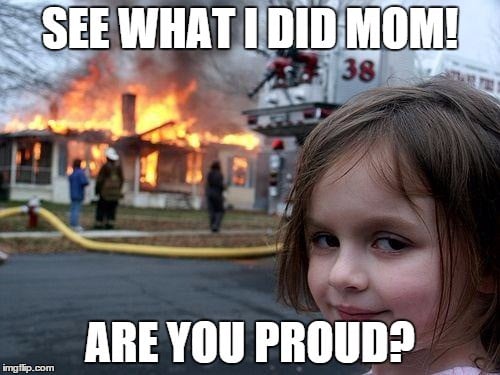
But here’s the thing.
Entrepreneurship is not about you and it’s not about your ‘epic’ idea.
It’s about making people’s lives better. It’s about helping and giving value 💝.
You know what’s even more difficult than building an audience?
Criar um produto com e para um público.
👉 Um produto que agrega valor para as pessoas. Um produto que as pessoas cuidados sobre 💕.
If people don’t care about your product, reality will catch up with you. Your world will come crashing down. All of your energy, time and money will have been for nothing.
And there’s nothing your mom can do about it 🤷.
9 em cada 10 startups fracassam 💀.
Principal causa de morte?
Trying to build a product for a group of people that doesn’t exist.

TL;DR
- as pessoas primeiro criam produtos, depois um público
- but what if people then don’t care about your product?
- Vire-o
- construa primeiro um público-alvo, depois o produto para esse público-alvo
- ou acabar morta, como acontece com 9 em cada 10 empresas iniciantes
Mediocre Viable Product 😕
Em 2011, Eric Ries tomou de assalto o mundo das startups com The Lean Startup.
People hailed it as the Bible of Startups 🙏.
Rightly so. The idea of starting from something small and gradually building it on customer input is probably the quickest way for a startup to find product-market fit 🖇️ and a scalable business model 📈.
If you haven’t read the Lean Startup (you should), here’s the gist of it:
- Build a Minimum Viable Product (MVP) 🎁
- Find out if people will pay money for it 💁
- Use feedback from those people to adapt the MVP up until the point a sustainable group of people will buy it 💰
An MVP is a product that has the minimum set of features to prove the hypothesis that is essential to your idea’s potential to exist.
(Just so we’re straight on that.)
Agora.
Remember the Product Adoption Curve? 😏

It’s one of those gazillion frameworks they show you in marketing class you instantly forget about. I did anyway 🤷.
The Product Adoption Curve is something all new kids on the block have to go through. Facebook, Slack, Uber and DVDs (still ring a bell? 🔔) — heck, even underwear at some point must have gone through it (hope those do ring a bell…).
Your MVP is meant to win over the innovators and, while you’re at it, the early adopters. The more the merrier, right? 🙌
Innovators and early adopters are the guys that’ll take your product for a spin when it’s still in diapers 👶.
They‘re okay with it still shitting the bed from time to time 💩. They look beyond the bugs and spartan features to see if your product deserves to exist.
They’ll share their findings with the world and, if they like what they see, may end up evangelising your product 😇.
Mas e se o seu MVP for ruim? 🙃
What if your MVP is so bad the innovators you’re trying to seduce don’t even give it the light of day?
Sure, it’s the bare minimum of your product, but you should still get some traction out of it, right? 🤔
It only takes one to start a fire 🔥 but it takes many to keep the fire burning.
Os MVPs têm o objetivo de acender o fogo da startup, mas muitas vezes acabam matando-o 💦.
In the early days your startup needs a bunch of passionate, almost religious fans 🙏. People that really dig what you’re doing and are in it for the long haul.
Você precisa desses fãs para ajudá-lo a atravessar o chasm, a grande lacuna existente entre você e as massas que o escalarão para se tornar uma empresa real.
🙃 Without fans you’ll be stuck at the start and fall into the chasm.
And once you’re in that shithole… Well, good luck getting out again 😐.
Então, será que Eric Ries errou? 🤔
Na verdade, não. A ideia de criar uma primeira versão reduzida de seu produto e, em seguida, desenvolvê-la junto com seus clientes é algo em que ainda acredito muito. Não apenas nos primeiros dias e não apenas para startups.
Entrepreneurs just seem to think the minimal in MVP gives them a hall pas to create whatever flaky fantasy they have in their heads and get away with it. No matter how crappy it is 💩.
A culpa é da arrogância ou de um famoso empresário que disse uma vez:
It’s not the consumers’ job to know what they want.
💬 Steve Jobs
Veja uma das partes do texto mais mal interpretadas de todos os tempos.
Not as bad as some people getting “kill all the people” from love-preaching religious books, but close.
A maioria dos empreendedores parece pensar que isso significa que eles podem decidir quais produtos os clientes devem usar.
What Steve really meant is that, as an entrepreneur, it’s your job to know which products customers will want to use without them telling you.
Sim, eu sei. Steve nos pegou de jeito 🙄.
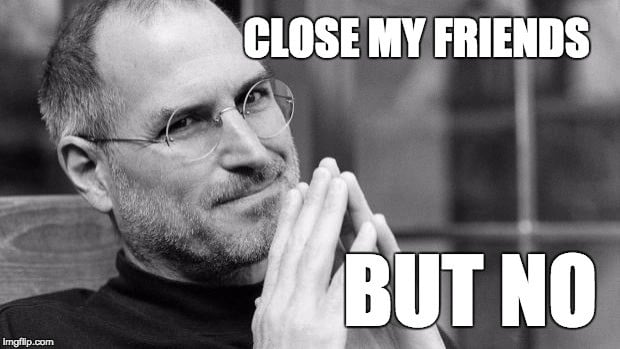
É preciso saber o que os clientes vão querer usar:
- intelligence 💡
- empathy 👂
💭 Será que 9 em cada 10 empreendedores são burros ou simplesmente não estão ouvindo?
Muitas empresas iniciantes não conseguem atrair os primeiros usuários de que tanto precisam. Elas se esforçam muito para serem notáveis, mas acabam se destacando pela mediocridade.
⚠️ You don’t get away with mediocrity.
Your customers deserve better. The world deserves better.
TL;DR
- a abordagem enxuta é a melhor maneira de encontrar a adequação produto-mercado
- e um modelo de negócios escalável
- Seu MVP deve conquistar os primeiros usuários e atravessar o abismo
- mas os MVPs geralmente se tornam medíocres
- because entrepreneurs don’t listen to what the market is telling them
- e depois não conseguem atravessar o abismo
Customer validation kinda sucks 🤔
The lean approach was brought into the world so startups could nail product-market fit asap. And yet the lion’s share is still fucking it up.
What’s missing here? 🤔
Os empreendedores estão fazendo um péssimo trabalho para descobrir o que o cliente quer.
Agora, qual é a única coisa que o ajudará a entender melhor um mercado?
🥁…🥁…🥁
Market research 🤓.
Provavelmente não são os fogos de artifício que você estava esperando.
No entanto, estou falando da pesquisa de mercado de 2017.
Not surveys. Stay away from surveys 👎.
Didn’t we just agree that Steve wants you to figure out what your customers want without them telling you?
Let me break down real quick why surveys suck for customer validation 🙅:
- 💣 Surveys are faceless. Customer development is about understanding people’s pains and needs. There’s no way they can tell you about those by ticking off some checkboxes.
- 💣 Surveys only tackle what’s already on your mind. You think your idea is epic and you’ll design your survey to see that confirmed. These presumptions will make you miss out on a lot of insights customers can give you. And are you so sure you know the right questions to ask?

- 💣 Surveys lack context. Do you know who you’re talking to? Segmentation is critical. How do you know if it’s good or bad that 20% confirmed your idea if you have no tangible idea of who they are and what makes them tick?
- 💣 Surveys don’t allow for proper follow-up. The whole idea of customer development in the lean approach revolves around finding paying customers for your MVP. Surveys don’t give you the opportunity to build relationships with potential customers.
Individuals are honest only to the extent that suits them, including their desire to please others.
💬 Dan Ariely in ‘Predictably Irrational’
- 💣 Surveys don’t predict future buying behaviour. Surveys measure rational motives, but human decision-making is determined by a lot of factors, a lot of which are not conscious or rational. People think they act out of ratio, while in fact they often just rationalise actions they did for reasons they can’t articulate. So even if people say they will buy your product on your survey, doesn’t mean they actually will. If you’d like to dive deeper into this, check out Thinking Fast & Slow by Daniel Kahneman and Predictably Irrational by Dan Ariely.
De fato, a validação do cliente na Lean Startup parece ser um conceito bastante abstrato.
Joel Gascoigne da ferramenta de gerenciamento de mídia social Buffer validou sua ideia por “simply tweeting the link and asking people what they thought of the idea.”
He then goes on saying 💬:
I got some useful feedback via email and Twitter, I considered it “validated”. In the words of Eric Ries, I had my first “validated learning” about customers.
Sério? 🙄
Some buddies of yours cheer you on and — hallelujah — the idea is validated?
É claro que o Buffer acabou se tornando um excelente produto pelo qual muitas pessoas estão dispostas a pagar, mas dificilmente você pode chamar isso de técnica de validação.
The Lean Startup dictates you should validate your idea as quickly as possible and then build from there. But what is validation, really? 🤷
People saying something is a good idea doesn’t mean it is and it sure as hell doesn’t mean they’ll buy it.
But if you’re all psyched about your amazing idea, you’ll settle for that and start building. Of course you will 😉.
And that’s how you get Mediocre Viable Products that don’t take off.
👉 Suicídio de startup.

Or how about this 👇.
O Dropbox obteve 75 mil opt-ins de e-mail em um dia a partir de um vídeo publicado no HackerNews.
That is as sweet as honey 🍯.
But does it mean your idea sucks if you don’t get that? 😐
Not every idea is going to go viral. There’s also a big difference between someone giving you their email address and someone giving you money.

A questão é a seguinte:
A validação do cliente, conforme prescrito no Lean Startup, é, no mínimo, superficial. A validação deficiente leva a MVPs defeituosos que não conseguem obter tração.
Quem sabe quantos produtos excelentes nunca viram a luz do dia por causa de uma versão mínima viável de baixa qualidade criada com base em uma validação de cliente de baixa qualidade? Ou o contrário?
You’re just not listening. You’re drunk in love with your baby-girl/boy idea and are looking everywhere for signs you should pursue it.
You’re just seeing whatever you want to see 😍.
Esses são casos de vieses cognitivos, mais especificamente vieses de confirmação e falácia do excesso de confiança.
It’s okay that you have that. Everyone does. It’s how your brain works and inherently human. The only way to cope with these blindspots, is to acknowledge you have ‘m and work your way around.
Oh, and if you’re one of those “yeah, yeah but I’m different” — kind of people, you’ve already lost.

TL;DR
- os empreendedores são péssimos em descobrir o que o cliente quer
- they’re missing market insights
- a validação do cliente, conforme prescrito pela abordagem lean, é uma porcaria
- pesquisas são ruins
- toda ideia se torna viral
- email opt-ins don’t equal money
- uma validação deficiente leva a MVPs defeituosos que não conseguem obter tração
- they’re prone to cognitive bias, clouding your vision
Minimum Viable Audience 👨👩👧👦
There’s a better way ☝️.
Em vez de criar um produto para um público potencial, comece a criar um público para um produto potencial.
Today’s Internet is the entrepreneurial gift from heaven for its ability to give you live insights in what the world in all its complexity is thinking and feeling at any time.
As pessoas vão logo lhe contar todos os seus problemas, desejos e necessidades sem que você pergunte. Desde que você reserve um tempo para procurar 👀.
Real-time market research 🕵️. Eat that, surveys.
Use a mídia social e as comunidades da Internet para ouvir antes de começar a falar. Saiba mais sobre as pessoas que você tem como alvo para poder criar algo que elas realmente desejam e para o qual estão dispostas a abrir suas carteiras.

Find your audience — the people you can and want to help — and connect with them.
Seja uma mosca na parede, mantenha seus olhos e ouvidos abertos. Depois, entre e participe.
Pergunte sobre suas dores, aprenda sobre os problemas com os quais eles se preocupam e descubra o que eles precisam.
You’ll find this knowledge to be incredibly powerful.
Not only are these people discussing the exact problems you’re looking to leave your mark on, they’re also using the language typical for your niche.
Every conversation will make you more of an expert and increase your ability to create unique value 👨🔬.
Once you’ve immersed yourself in the tribe, its time to start building your influence by giving to the community.
Seu objetivo é agregar valor. Ainda não na forma de um produto, mas na forma de conteúdo que:
- helps 🤝
- inspires 💡
- delights 😊
- entertains 🤹.
Sem esperar qualquer coisa em troca.
One of the key things we’re learning is that you need to build an audience before you build your product. Build your audience not for marketing, but for learning.
Fundador QuickSprout e CrazyEgg
You’ll be learning directly from a real group of people as they react to relevant triggers — your content — instead of trying to garner a strained idea from generic market research based upon vague lean startup validation techniques.
These are real people who’ll pay attention to you, with real pains 🤕 you can solve and real goals 🥅 you can help them achieve 🏆.
The cues you’ll get from your audience bouncing back off your content will give you the ingredients to cook up a minimum viable product that is Exceptional (EVP) rather than Mediocre (MVP) and gets the early adopters all lyrical, ready to bring you across the chasm 😏.
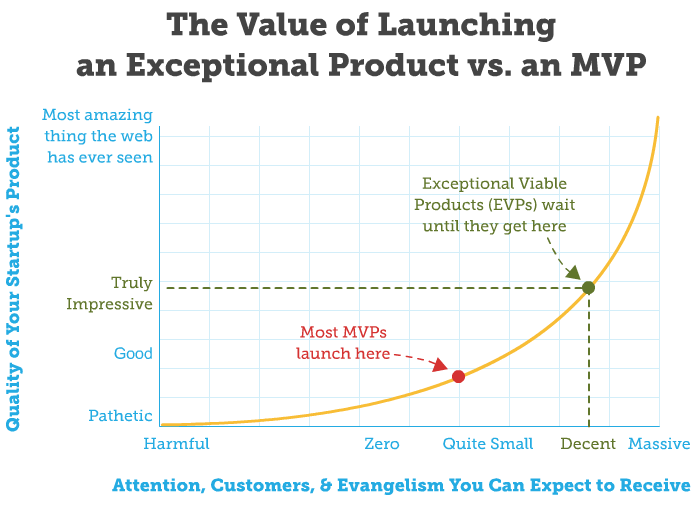
Even if your EVP doesn’t get the traction you hoped for, you’ll still have a loyal audience coming back because you’re feeding them value and helping them advancing in whatever it is they care about.
Você pode mostrar a eles wireframes, apresentações de slides, páginas de aterrissagem, mockups ou outras amostras de produtos de baixo risco e ver como eles reagem.
If you can pull off building yourself an engaged audience, you’ll have a focus group that will do the heavy marketing lifting for you 💪.

A maioria das pessoas começa com algo que deseja vender e depois precisa descobrir como vender e para quem vender.
With an audience, you’ll have your customers sitting in your backyard, waiting for your next big thing.
They’ll be your compass, able to get you back on track as soon as you go off the rails. If they’re suddenly responding less, it could mean you’ve lost touch and need to re-adjust your focus.

The beauty is that maintaining an audience requires minimal effort because it’s just about being human. You’re talking and listening. You’re connecting with other human beings, which is what both life and business are ultimately all about.
TL;DR
- em vez de criar um produto para um público potencial
- construir um público-alvo para um produto potencial.
- As tribos da mídia social e da Internet permitem pesquisas de mercado em tempo real
- encontre as pessoas que você pode e quer ajudar
- seu público-alvo lhe dirá pelo que deseja pagar
- construir um EVP (Exceptional Viable Product) em vez de um MVP
- manter um público-alvo é fácil
- it’s talking, listening — and just being human
Why giving is your superpower 💫
You do have a magical superpower 👉 Generosity.
It also goes by the name of altruism. Or selflessness 💁.
🎁 Oferecer valor gratuitamente.
Sounds a tad contradictory to the transactional nature of business? 🤔
Never in the history of the world has there been someone who has given away too much. It’s one of the things that sets apart líderes de seguidores.
Most people just laugh when they hear that the secret to success is giving . . . Then again, most people are nowhere near as successful as they wish they were.
💬 Bob Burg and
John David Mann
‘The Go Giver: A Little Story About a Powerful Business Idea’
When you give away value so good you could have charged money for it, you show you’re in the business of helping people rather than helping yourself.
This is selfless goodwill — you give something without expecting anything in return. People will admire you for it.
Giving builds your ethos — the authority, credibility and honesty that comes with your message and is essential for persuasion.
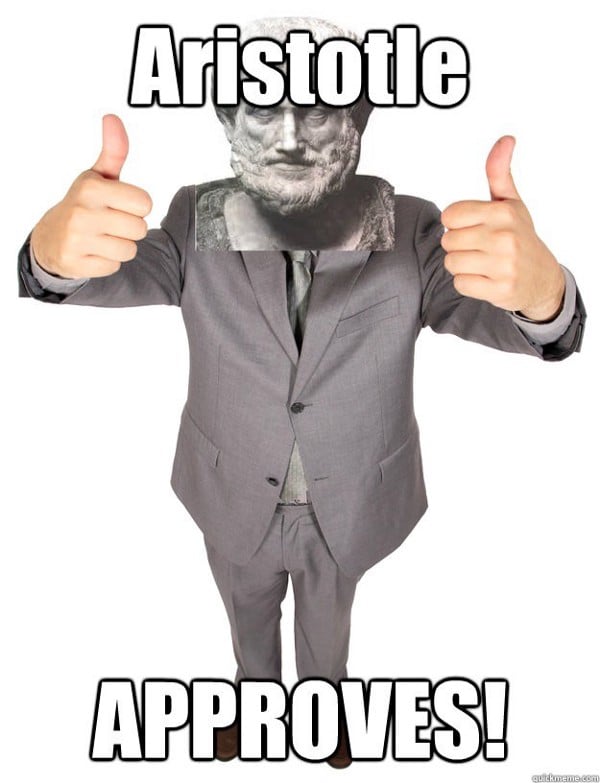
It’s how Aristotle and his old Greek friends rolled when they wiped the floor with their debate opponents in Athens.
A doação aumenta sua capacidade de influenciar e, portanto, de vender.
✋ What’s more: humans are wired to repay generosity.
Try sending out a batch of Christmas cards to complete strangers 📬. You’ll be amazed by how many you’ll get back. From people you have never met.
Esse foi um experimento social real em 1976.
Philip Kunz e Michael Woolcott enviaram 578 cartões de Natal para completos estranhos e receberam 117 de volta.
Taxa de resposta de 20%, baby. Os profissionais de marketing matariam por isso hoje em dia.
If you give people exceptional value regardless of whether they ever pay you a dime, they’ll feel a need to repay you one way or another.
By choosing you over a competitor, for example 😎.
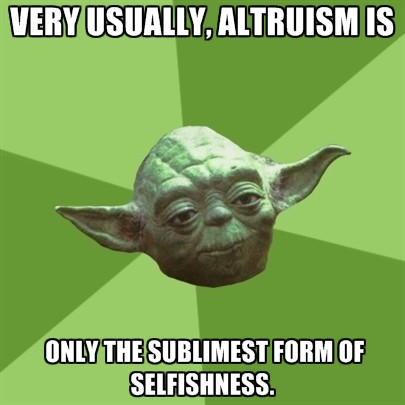
So. No cutting corners, no holding back, no being stingy.
👉 Help, inspire, delight & entertain.
Give. At every step of your prospect’s journey.
Blog posts, podcasts, videos, ebooks, whitepapers, webinars, online courses.
Whatever your audience likes best 👉 go all-in and make it high-quality.
- 🖐️ Giving allows you to connect with customers without pitching. They’ll lower their walls because they’ll know, like and trust you.
- 🖐️ Giving pulls people towards you. No desperate cries for attention needed, just magnetic superpowers.
- 🖐️ Giving will make you a trusted authority in your field.
There are two kinds of people: eaters and bakers. Eaters think the world is a zero-sum game: what someone else eats, they cannot eat. Bakers do not believe that the world is a zero-sum game because they can bake more and bigger pies. Everyone can eat more. People trust bakers and not eaters.
As pessoas compram e indicam pessoas que conhecem, gostam e confiam.
Essa é uma verdade universal.
It was true in Dale Carnegie’s time when he wrote the all-time bestseller How To Win Friends and Influence People and it’s true today.
Customers aren’t looking for a sales pitch.
They’re looking for solutions to their problems.
Give it to them and you’ll be their hero 🌟.
High-value content is a low-threshold way of helping your target group while learning where you can make a difference. It’ll help you build a loyal audience that trusts you to solve their problems.
The very best thing you can do as a startup founder is to earn a reputation for helping others.
If you help people advance in whatever they care about, they’ll respect you, they’ll trust you, they’ll engage with you, they’ll want your help, they’ll seek your opinion, they’ll share your content. And they’ll buy from you.
TL;DR
- generosidade/altruísmo/altruísmo é seu superpoder
- dar valor de graça
- it’s one of the things that sets apart leaders from followers
- o ato de doar aumenta sua capacidade de influenciar e, portanto, de vender
- as pessoas sentirão a necessidade de retribuir a você
- as pessoas compram e indicam pessoas que conhecem, gostam e confiam.
- build your klt — factor with content that helps, inspires, delights and entertains
“I already have a product, dumbass” 🙃
You’re probably reading this because you’re looking to get some actionable advice on how to market your startup for maximum growth 📈.
E aqui estou eu pregando as chamadas sabedorias sobre como você deveria ter jogado seu jogo de marketing muito antes de ter um produto.

Aguarde, o material prático está chegando.
Esse pequeno e peculiar trecho de texto é o prefácio de uma série de postagens que tem o objetivo de orientá-lo na selva selvagem do marketing B2B on-line.
Nas próximas semanas, lançarei guias sobre como eliminá-lo:
- Comunidades da Internet
- E-mail frio
- … and whatever I still come up with (feel free to pitch in my idea pool)
But this right here, this value-audience fit stuff, is your skeleton key 🗝️.
It’s the One Key To Rule Them All 👊.
All of the guides I’ll be writing, all of the actionable advice will be built on that one guiding principle of building yourself a fanbase by giving value to people that value is of value to.
Canais e plataformas como Facebook, LinkedIn, Google e e-mail são apenas meios que você pode usar para levar o seu valor ao seu público.
And here’s the thing.
⚠️** SPOILER ALERT: HERE’S WHERE IT BECOMES RELEVANT TO YOU**⚠️
Se as startups podem fazer isso do zero, pense no potencial se você já tiver uma base de clientes.
Mas uma base de clientes não é um público ainda.
❓ Ask yourself.
O que o torna único? Que valor você está oferecendo?
Qual é o seu campo de atuação? O que faz de você um rei?
Quem você está ajudando? A quem você está agregando valor?
Para quem você está escrevendo conteúdo? Para quem você está criando seu produto?
Can’t come up with an answer?
👍 Bom.
Now you know why no one is reading your blog posts.
Why only your mom likes your Facebook updates.
Why you’re getting so much hate on your cold emails.
Why your website traffic isn’t going up.
Why none of your trial users starts paying.
👉 Agora você sabe qual é o problema.
Pare de enviar e-mails frios aleatoriamente para pessoas implorando por atenção.
Pare de criar um zilhão de páginas de destino para ver o que cola.
Pare de postar sem pensar no Facebook, LinkedIn, Twitter e Instagram.
Pare de jogar dinheiro no ralo do Facebook Ads e do Google Adwords.
Pare de procurar truques de mágica e vitórias rápidas.
✋ Comece do zero.
Encontre a área de problemas em que você pode ser o rei das soluções e, em seguida, construa um reino de valor sobre ela.
Not sure if you’re so unique? 😯
Double-down on your topic until you’re an authority to be reckoned with on something you truly know and care about. Pursue your curiosity and you’ll find the path that’ll make you unique 🌟.
TL;DR
- Criar uma base de fãs oferecendo valor é a chave para o marketing on-line
- em breve, mais material prático
- Entretanto:
- o que torna você único?
- a quem você está dando valor?
- pare de procurar truques de mágica e vitórias rápidas
- descobrir onde você pode ser rei e construir um reino de valor em cima disso
Lean from the best 👑
I didn’t invent this stuff.
I’m just the clown reporting it.
Isso já foi feito antes e foi bem feito.
Algumas das startups mais bem-sucedidas da atualidade construíram seus reinos com base na distribuição de conteúdo de alto valor, em vez de vitórias rápidas e hacks de crescimento.
If you don’t take my word for it, take theirs.
1. Kissmetrics 📊
If you’ve been reading stuff on online marketing and startups, there’s no way you don’t know about Kissmetrics, marketing analytics software.
Founded by content marketing kings 🤴 Hiten Shah and 🤴 Neil Patel Kissmetrics started blogging around 2009. Long before their product was launched.
Eles fizeram isso identificando suas personas de compra e criando conteúdo que as ajudasse.
Today, about 9 million online marketers, founders, CTOs,… read their posts every month. Todo o seu negócio é baseado nisso 🚀.
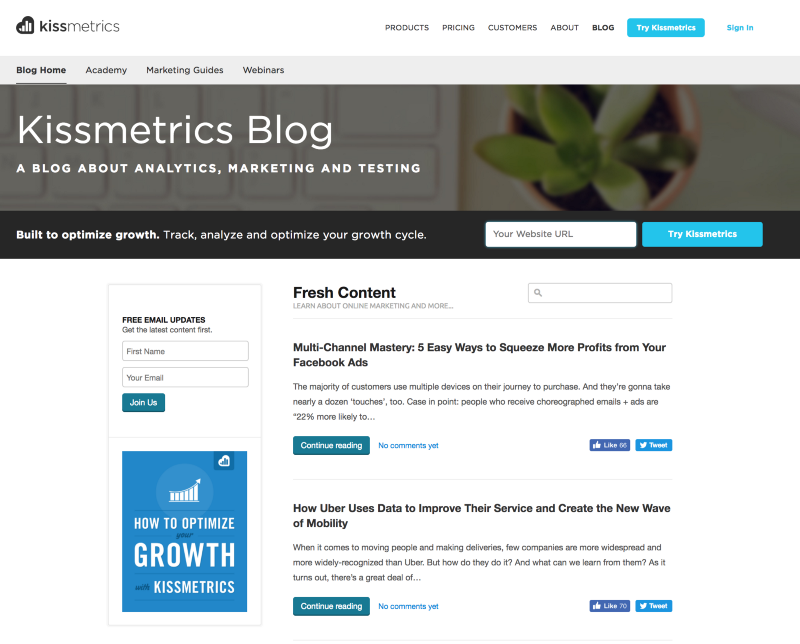
It shows you the unparalleled power of blogging to slow-cook an idea into a readers’ head.
I couldn’t see myself using anything else than Google Analytics. It’s easy, it’s good and it’s free. Why would I change? 🤔
But while making my way through startup marketing, I found myself regularly reading well-written posts over at Kissmetrics’ blog.
Not just stuff like ‘Key Customer Metrics You Need To Be Tracking’, but also How Search Rate Is Killing Your Conversion Rate (And How To Fix It) and Effective SEO For All Stages Of The Conversion Funnel.
Esses caras estão por toda parte. O conteúdo deles realmente ajuda você a expandir seus negócios. These guys must know what the hell they’re doing 😯.
Então, em algum momento, eu simplesmente exagerei.
Today, I’m not only using Kissmetrics, I’m recommending it to other people.
Atualização: Infelizmente, a Kissmetrics foi vendida e o blog foi retirado do ar. Parte do blog foi transferida para neilpatel.com, mas nenhum dos artigos mencionados acima ainda está ativo.
2. Caça ao produto 😼
What cool products are you using?
It’s a question we all ask and it turned out to be one hell of a community builder: Product Hunt.
Product Hunt is the little baby of Ryan Hoover. Ryan is one of those guys who just friggin’ loves everything new and cool ✨.
Não apenas por diversão. Para Ryan, os novos produtos são uma oportunidade de aprender e, acima de tudo, uma maneira de se conectar com pessoas que pensam da mesma forma.

Para descobrir se poderia criar uma comunidade em torno desse tópico, Ryan Hoover começou com um boletim informativo por e-mail com curadoria, apresentando os melhores produtos novos todos os dias.
Within two weeks, Ryan’s little mailing list had 170 subscribers geeking over new products discovered by 30 hand-picked contributors, among which startup founders, VCs, and prominent bloggers.
Today, Product Hunt is Silicon Valley’s favourite little playground. A tightly-knit community of like-minded geeks who bond over anything hot 🔥 and the new ✨. Tech, but also books, podcasts and games — you name it.
3. Moz 🔍
Here’s what Rand Fishkin, founder of SEO software Moz, has currently pinned on his Twitter wall.
Está vendo o que quero dizer? 😎

Como o Kissmetrics, o Moz foi criado com base em um blog.
For the first 18 months, they built an audience with little free tools and downright legendary SEO for beginners guides 📚.
These guides have been around for more than 12 years now. They’re being continuously updated and are still pulling in new customers every day.
Quando começaram as assinaturas em 2007, a Moz tinha um público de cerca de 10 mil profissionais de marketing que eles usavam para ajustar e aumentar seu valor.
By 2008–2009, Moz was pulling in subscribers from far beyond their own community. Today it is one of the leaders in SEO software.
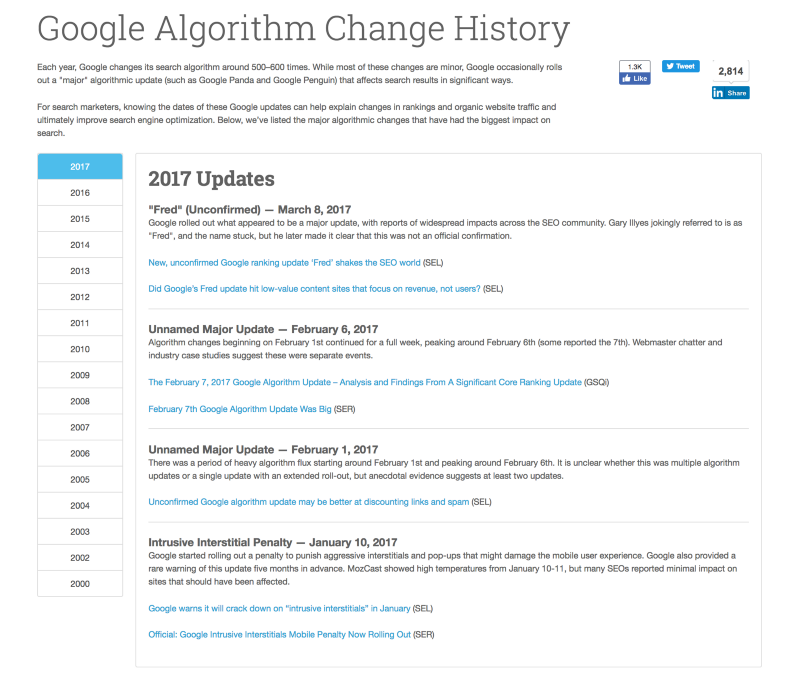
Moz is also known for staying right on top of its industry with thorough research. They’re famous for annually documenting changes in Google’s algorithm and teaching on how to go about those changes. It’s a unique resource that gives them invaluable thought leadership 💭.
Without that “marketing first” approach, I’m skeptical if we ever could have gotten a product off the ground.
💬 Rand Fishkin — Founder of Moz
Rand voltou a acreditar na construção de comunidades como marketing quando se uniu à HubSpot para criar Inbound.org, uma comunidade para profissionais de marketing on-line.
4. HubSpot 🎯
A HubSpot é um império de marketing baseado em valores de todos os tipos.
Entre outras coisas, esses caras são campeões quando se trata de marketing de projetos paralelos. Eles criam pequenas ferramentas gratuitas que trazem grande valor para muitas pessoas.
O exemplo mais famoso é o WebsiteGrader, uma ferramenta que informa o desempenho do seu site em relação às principais métricas, como desempenho, prontidão para dispositivos móveis, SEO e segurança. De graça.
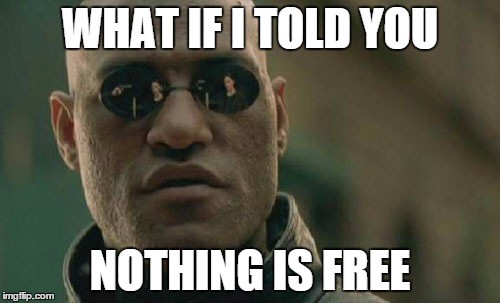
It goes without saying HubSpot’s software offers you the solutions to pain points that may emerge from WebsiteGrader. They’ll make sure you know about that with drip email campaigns 💦 and quality content 📚.
HubSpot is big on content. They have a whole library of free ebooks on inbound marketing topics. They complement those with checklists 📋 and templates 📝 to get their audience to really act on those guides and push them further down the sales funnel.
The Next Big Thing… 💯
Now that you’re all hot and ready to get cracking on that audience…🔥
I’ll have you wait for a week to show you how to go about that 😛.
💬 We’ll talk about:
- how to find a field where you be of value in 🤴
- how to find your audience where you can be of value to 👨👩👧👦
- how to make sure the things fit together like they were meant for each other, forever and ever 💏
Make sure to subscribe so you don’t miss anything 😏.

Esperamos que você tenha gostado desta postagem.
If you did, hit ❤ to spread the word!
For more hot stuff on startups, growth marketing and sales
👉 assine aqui
👉 Siga @salesflare no Twitter
- Os 20 melhores livros de vendas que Elon Musk provavelmente está lendo - fevereiro 14, 2023
- 6 maneiras infalíveis de fazer com que sua startup tenha seus primeiros 100 clientes - dezembro 6, 2022
- Como criar um funil de vendas que vende - setembro 2, 2021
